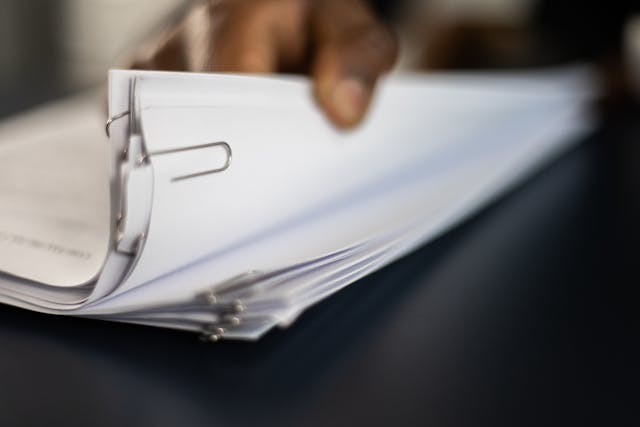
Why does a paper cut hurt so much? Paper cuts hurt so much because of the roughness of the paper, the places we are most likely to cut, and the size of the cut.
The first reason that paper cuts hurt so much is because of the paper itself. Paper is made from a dried and bleached pulp of wood pulp. That means it is mostly made of cellulose fibers. Cellulose is the incredibly tough carbohydrate that gives the cell walls of plants their strength and rigidity. It is so tough that we, and the majority of animals, cannot digest it. Not only is it painful to eat, but it is also too strong to break down. The only animals that can eat it are ruminants, like cows, and they have to have several adaptations to do it. They have teeth that constantly regrow because they get ground down by the tough fibers, and they have four stomachs to give the fiber more time to break down. And this incredibly tough material is what paper is made out of. If you imagine that, you can begin to get an idea of why a paper cut would hurt so much. If you look at a piece of paper under an electron microscope, it has lots of spikes, sharp ridges, and is very much not smooth. If you then look at the blade of a knife under an electron microscope, it is far smoother. A knife slices through skin, while a piece of paper tears through it. If you have ever cut yourself with a very sharp knife, you might have found that you don’t realize you have cut yourself until later, perhaps when you find blood on something. Only then does the cut begin to hurt. This is because the sharper a knife is, the cleaner the cut will be, and the less irritation it will cause to the surrounding nerve fibers. Pain isn’t sent to the brain by the nerves that are cut because once they are cut, they can’t function. Pain is sent by the surrounding pain receptors that are irritated by the cut, and a rough cut will irritate more of these than a clean cut.
We have slightly covered the second reason, but it is due to the amount of nerves we have in the places we are most likely to cut with paper. We obviously have pain receptors all over our bodies, but we have far more of them in our hands, and the most are in our fingers. This makes sense because our hands and our fingers are our primary sense of touch. We need to have very sensitive fingers. As we just mentioned, when you cut a nerve fiber, it no longer works. It is the surrounding nerve fibers that sense the pain and send signals to the brain. A papercut on the finger is going to be able to irritate more nerve fibers than it would on some other part of your body. I don’t recommend you try it, but if you got a paper cut on your back, you might not even notice it, and you would forget about it pretty quickly.
And the last reason is the size of the cut. Paper cuts tend to be wider and shallower than a cut from a sharp knife. There are two problems with that. The first is that the wider the cut, the greater the circumference and the greater the number of pain receptors that can be affected. A narrow cut will also close back together fairly quickly, which will help it to heal faster and protect the exposed nerve endings. This doesn’t happen with a paper cut, and the nerve endings are left exposed.
The lack of depth is another problem. There are many blood capillaries beneath the skin. A knife cut will sever these capillaries, and blood will ooze out through the cut. With the blood comes the body’s own pain relief and clotting factor. The clot and the endorphins will numb the cut, and it will hurt less. A scab will form to keep the cut protected from the air and any bacteria and to give it space to heal. A paper cut is often too shallow to cut through these capillaries. That means there is no blood, no clotting, and no painkiller. The nerves are left exposed to the open air, and the pain is left to continue.
Sources
https://www.bbc.com/future/article/20160902-why-paper-cuts-hurt-so-much
https://health.osu.edu/health/general-health/why-do-papercuts-hurt
Photo by KATRIN BOLOVTSOVA: https://www.pexels.com/photo/a-close-up-shot-of-a-person-going-through-documents-6077886/
